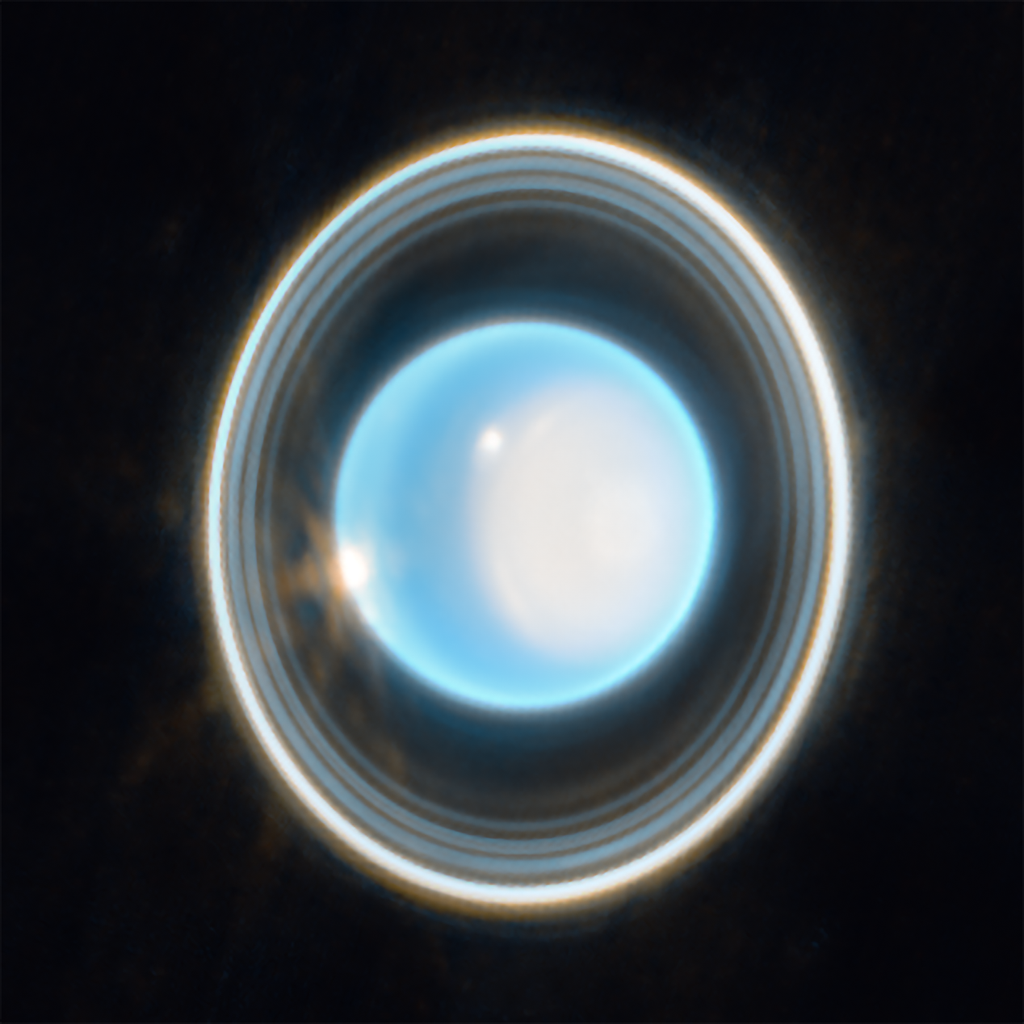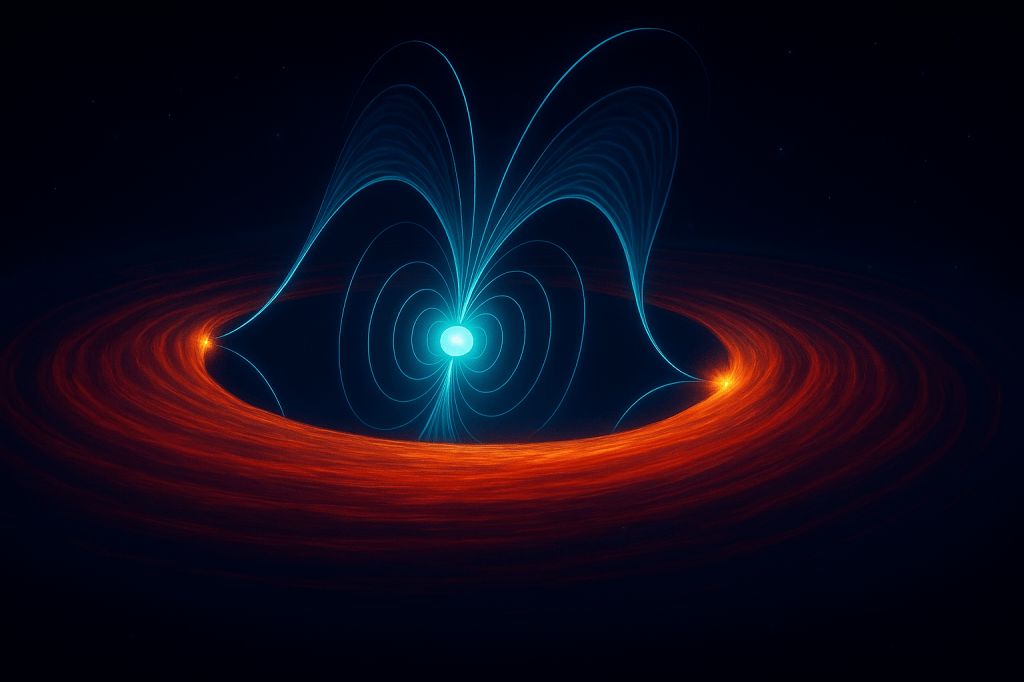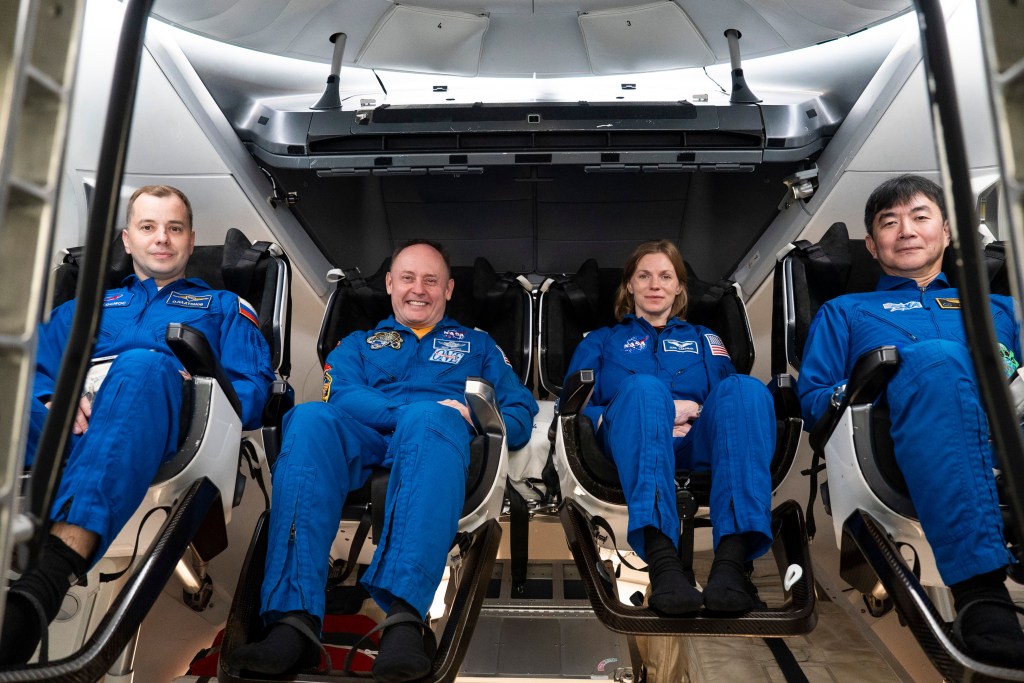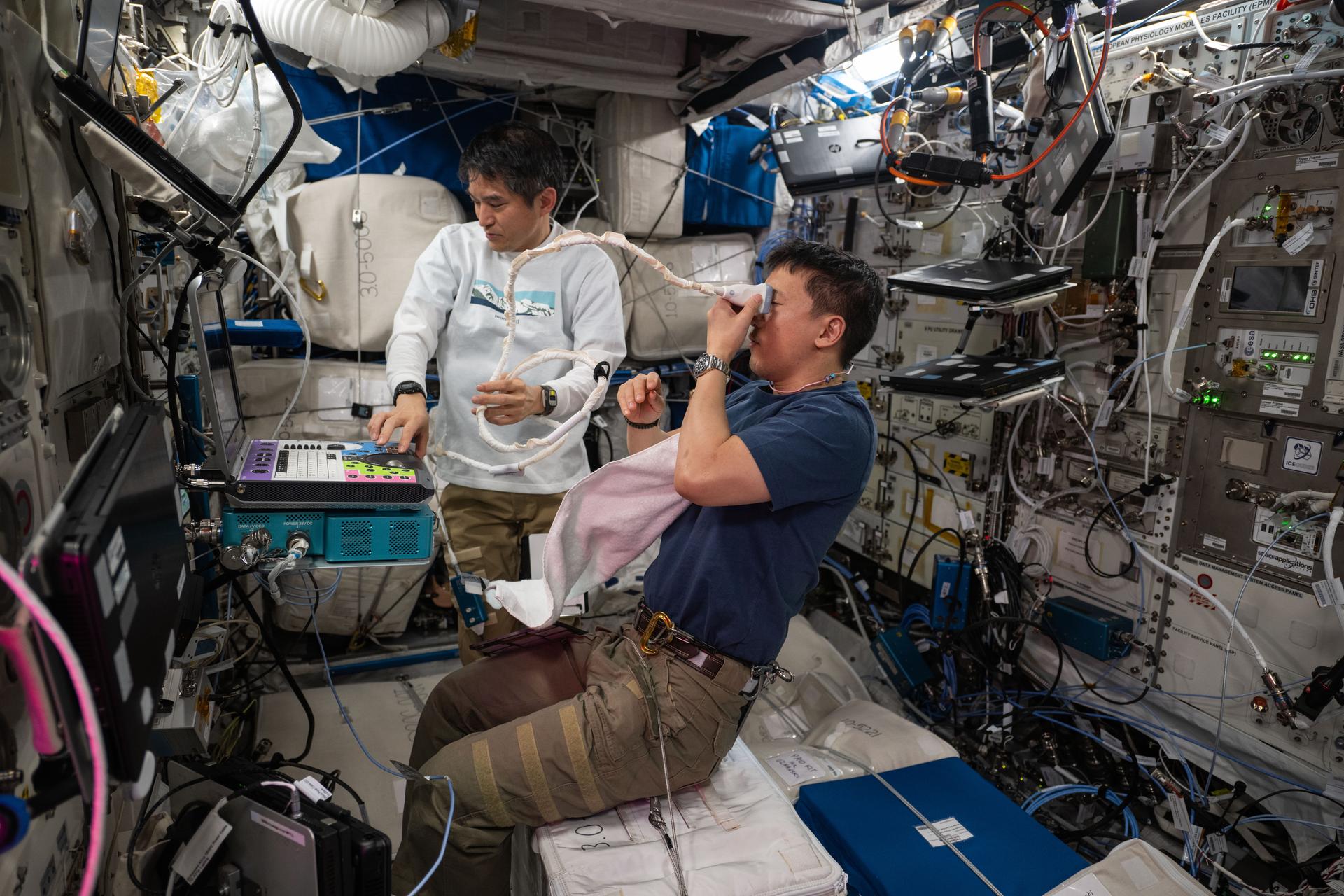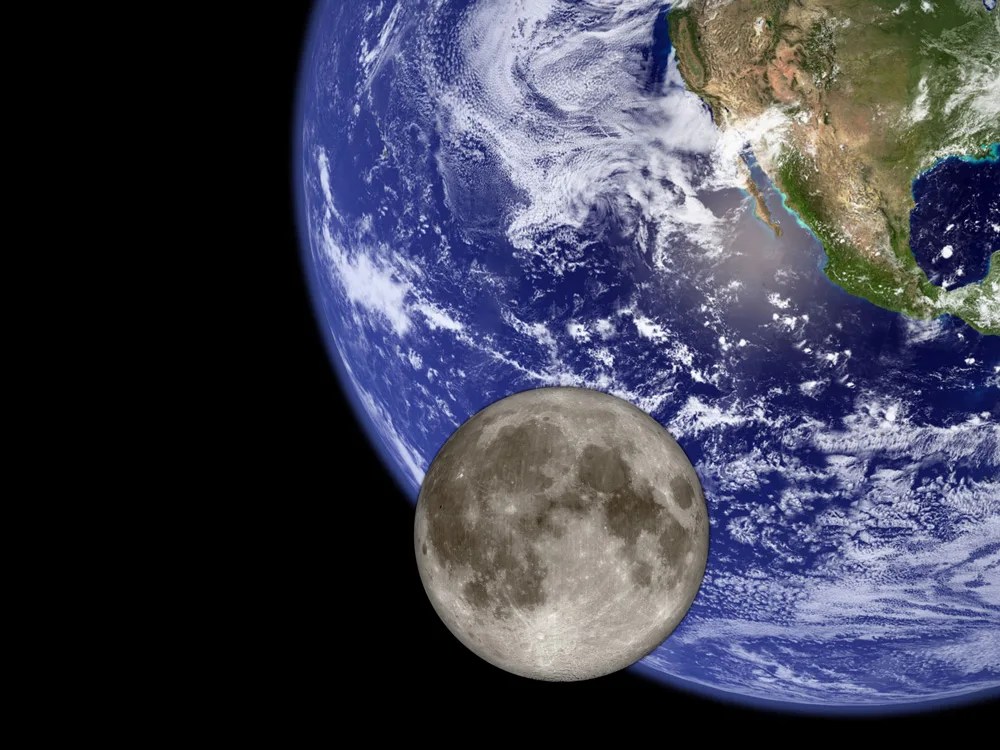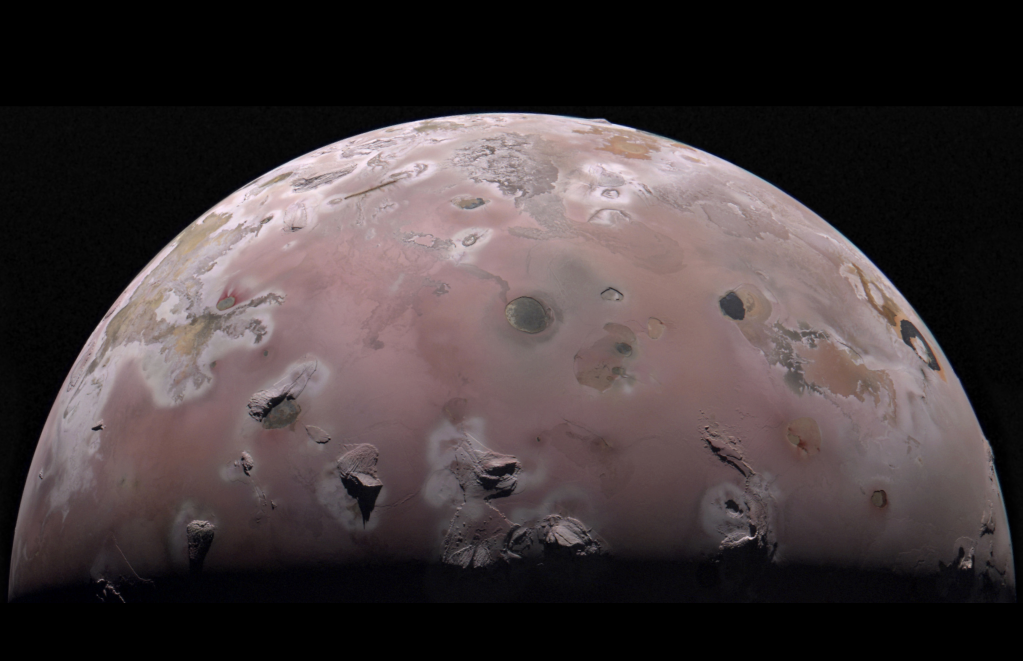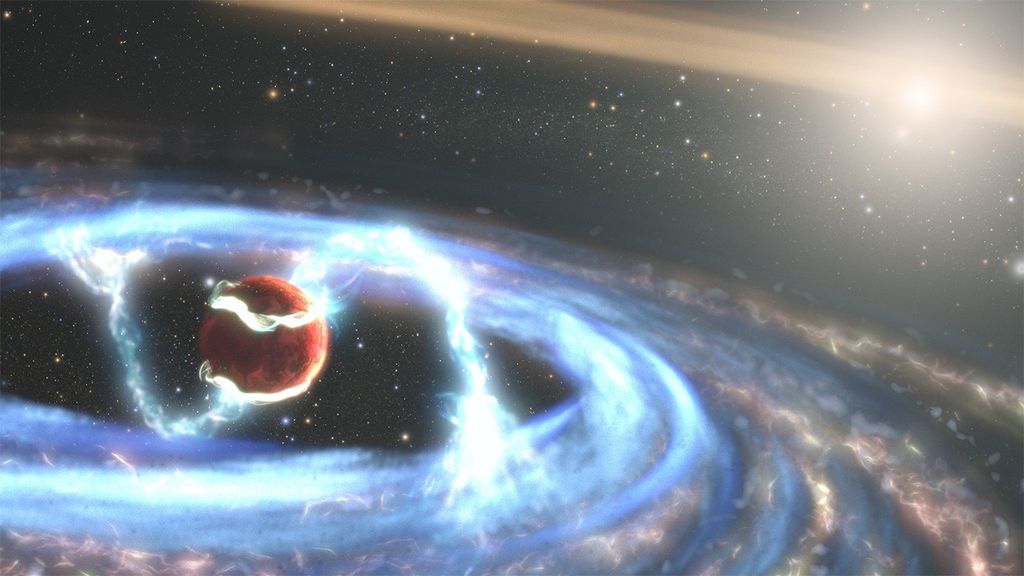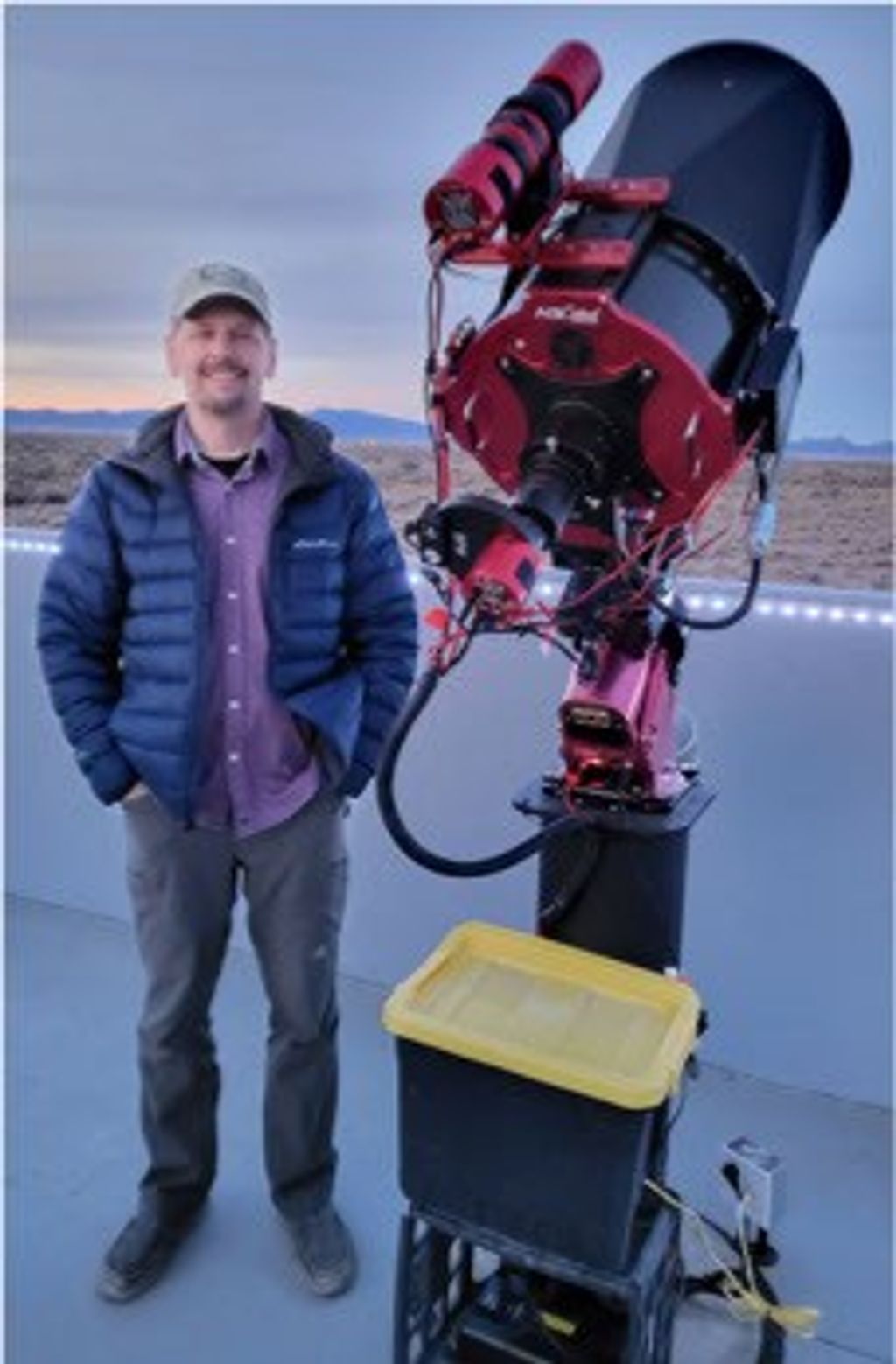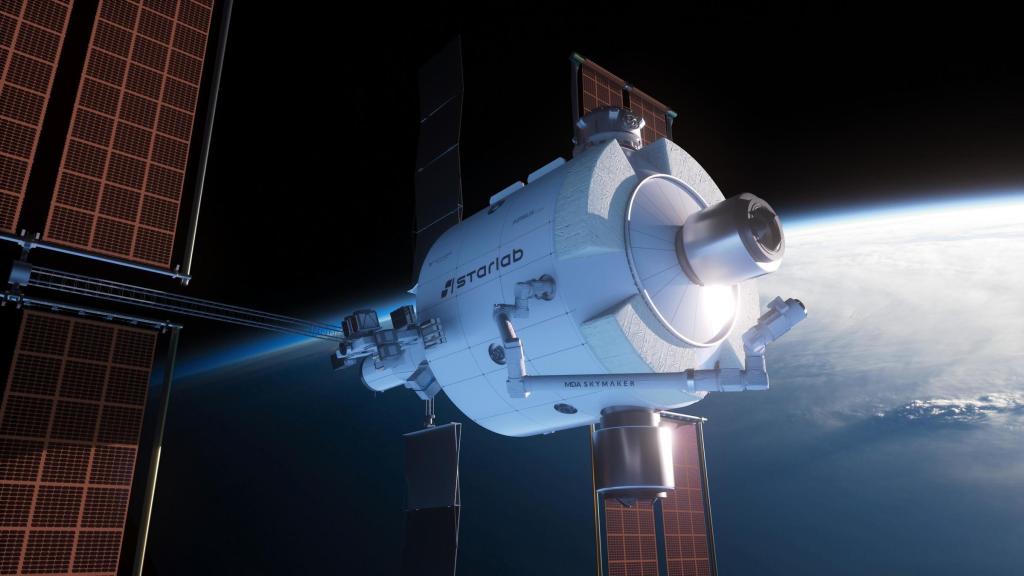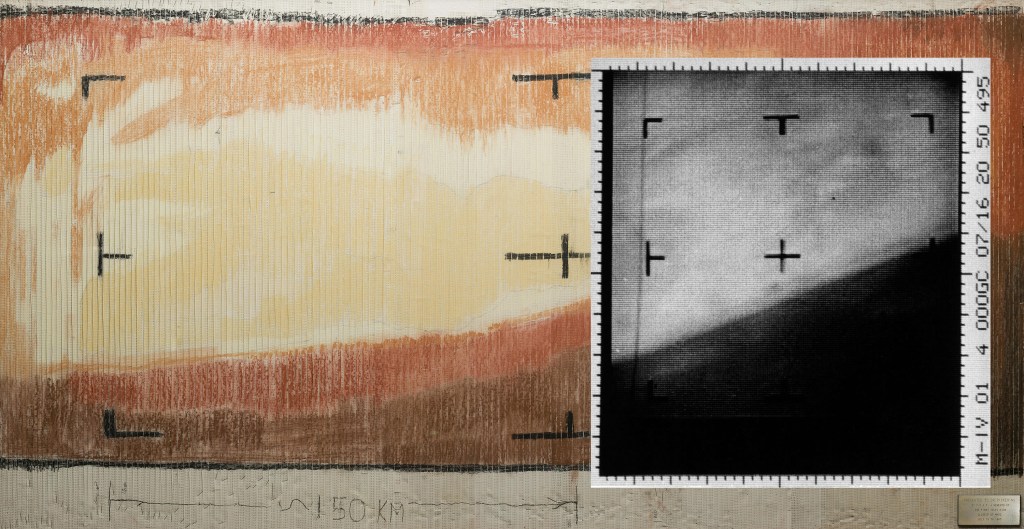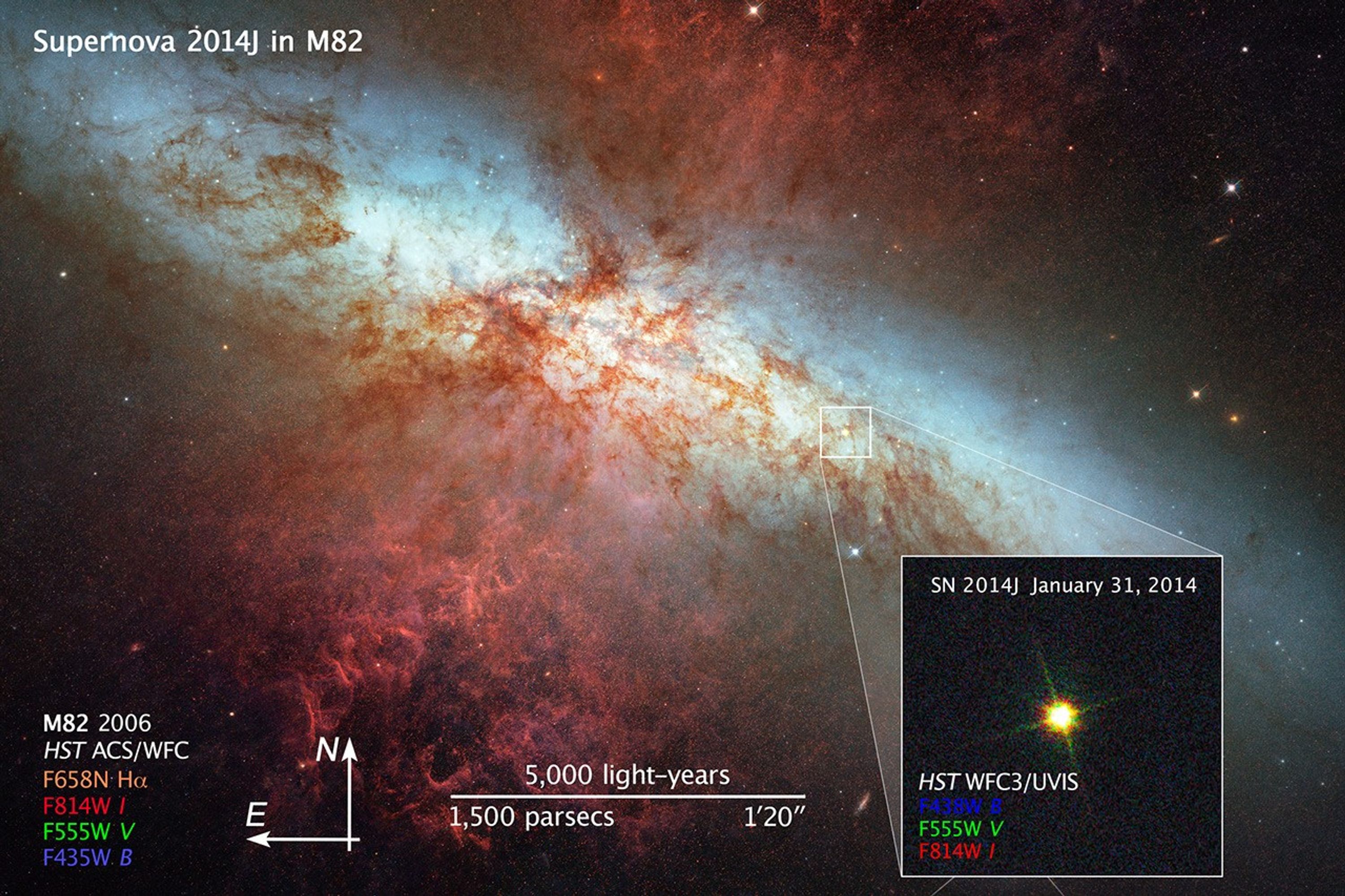1 min read
Hubble Monitors Supernova In Nearby Galaxy M82
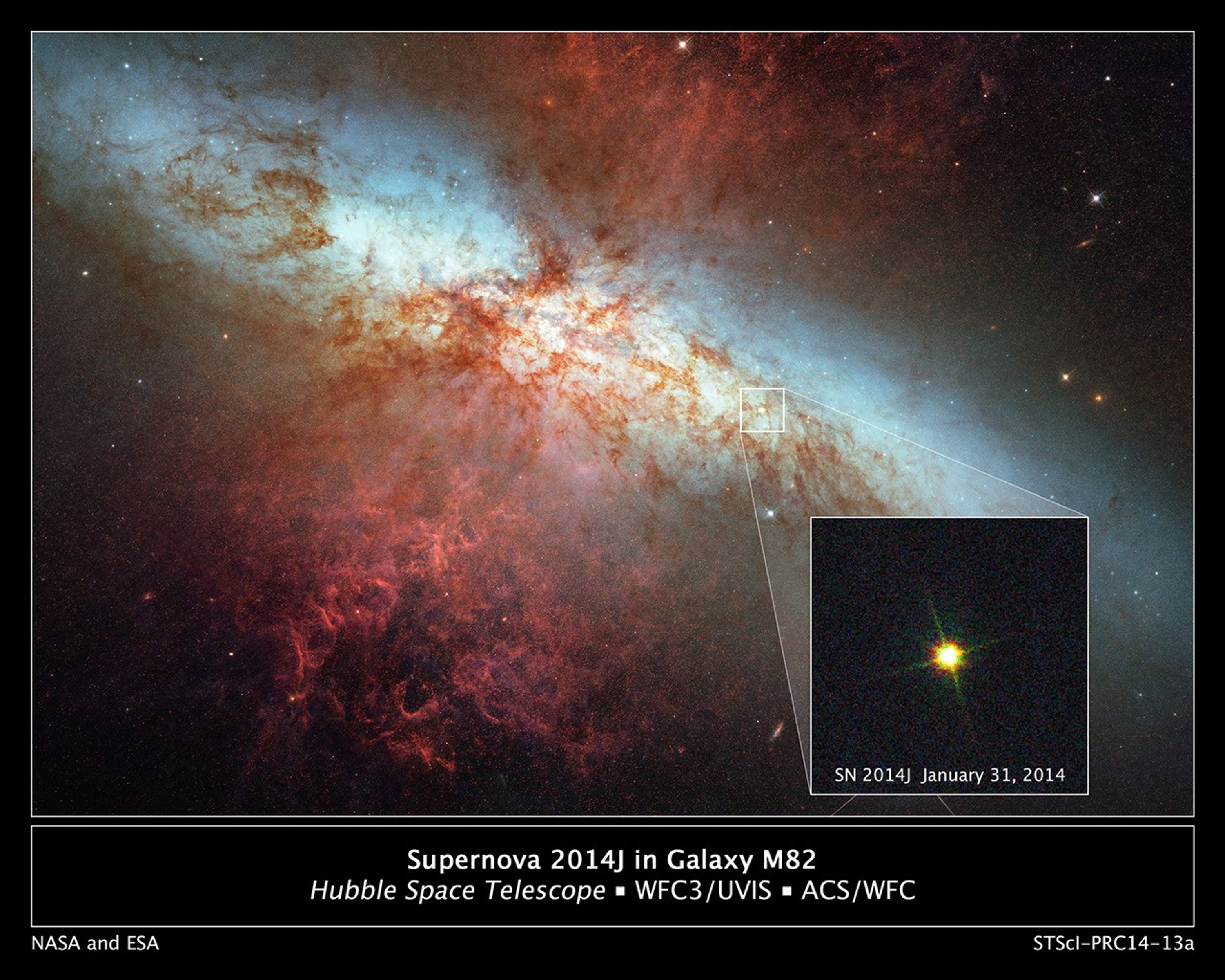
This is a Hubble Space Telescope composite image of a supernova explosion designated SN 2014J in the galaxy M82. At a distance of approximately 11.5 million light-years from Earth it is the closest supernova of its type discovered in the past few decades. The explosion is categorized as a Type Ia supernova, which is theorized to be triggered in binary systems consisting of a white dwarf and another star – which could be a second white dwarf, a star like our Sun, or a giant star.
Astronomers using a ground-based telescope discovered the explosion on January 21, 2014. This Hubble photograph was taken on January 31, as the supernova approached its peak brightness. The Hubble data are expected to help astronomers refine distance measurements to Type Ia supernovae. In addition, the observations could yield insights into what kind of stars were involved in the explosion. Hubble's ultraviolet-light sensitivity will allow astronomers to probe the environment around the site of the supernova explosion and in the interstellar medium of the host galaxy.
Because of their consistent peak brightness, Type Ia supernovae are among the best tools to measure distances in the universe. They were fundamental to the 1998 discovery of the mysterious acceleration of the expanding universe. A hypothesized repulsive force, called dark energy, is thought to cause the acceleration.
The January 31 image, shown here as an inset, was taken in visible light with Hubble's Wide Field Camera 3. This image was superimposed into a photo mosaic of the entire galaxy taken in 2006 with Hubble's Advanced Camera for Surveys.
Among the other major NASA space-based observatories used in the M82 viewing campaign are Spitzer Space Telescope, Chandra X-ray Observatory, Nuclear Spectroscopic Telescope Array (NuSTAR), Fermi Gamma-ray Space Telescope, Swift Gamma-Ray Burst Explorer, and the Stratospheric Observatory for Infrared Astronomy (SOFIA).
About the Object
- R.A. PositionR.A. PositionRight ascension – analogous to longitude – is one component of an object's position.09h 55m 52.72s
- Dec. PositionDec. PositionDeclination – analogous to latitude – is one component of an object's position.69° 40' 45.76"
- ConstellationConstellationOne of 88 recognized regions of the celestial sphere in which the object appears.Ursa Major
- DistanceDistanceThe physical distance from Earth to the astronomical object. Distances within our solar system are usually measured in Astronomical Units (AU). Distances between stars are usually measured in light-years. Interstellar distances can also be measured in parsecs.11.5 million light-years (3.5 million parsecs)
About the Data
- Data DescriptionData DescriptionProposal: A description of the observations, their scientific justification, and the links to the data available in the science archive.
Science Team: The astronomers who planned the observations and analyzed the data. "PI" refers to the Principal Investigator.Galaxy M82: The pre-supernova data are from Hubble proposal 10776: M. Mountain (STScI), J. Gallagher (University of Wisconsin-Madison), P. Puxley (Gemini Observatory), and the Hubble Heritage Team: K. Noll (NASA/GSFC), C. Christian, L. Frattare, F. Hamilton, Z. Levay, M. Mutchler, W. Januszewski, and T. Royle (STScI/AURA), and H. Bond (STScI/Pennsylvania State University). Inset supernova image: The post-supernova data are from Hubble proposal 13621: A. Goobar and R. Amanullah (Stockholm University), Y. Cao (Caltech), and P. Nugent (Lawrence Berkeley National Laboratory). - InstrumentInstrumentThe science instrument used to produce the data.HST>ACS/WFC (galaxy), HST>WFC3/UVIS (supernova)
- Exposure DatesExposure DatesThe date(s) that the telescope made its observations and the total exposure time.March 27-29, 2006, Exposure Time: 13.7 hours (galaxy), January 31, 2014, Exposure Time: 1.5 seconds (supernova)
- FiltersFiltersThe camera filters that were used in the science observations.Galaxy M82: F435W (B), F555W (V), F658N (H-alpha), and F814W (I) Inset supernova image: F438W (B), F555W (V), and F814W (I)
- Object NameObject NameA name or catalog number that astronomers use to identify an astronomical object.SN 2014J and M82, NGC 3034
- Object DescriptionObject DescriptionThe type of astronomical object.Starburst Galaxy and Supernova
- Release DateFebruary 26, 2014
- Science ReleaseHubble Monitors Supernova in Nearby Galaxy M82
- Credit

This composite image includes exposures acquired by the WFC3 and ACS instruments on the Hubble Space Telescope. Several filters were used to sample broad wavelength ranges. The color results from assigning different hues (colors) to each monochromatic (grayscale) image associated with an individual filter. In this case, the assigned colors are: Galaxy M82: Blue: F435W (B) Green: F555W (V) Orange: F658N (H-alpha) Red: F814W (I) Inset supernova image: Blue: F438W (B) Green: F555W (V) Red: F814W (I)
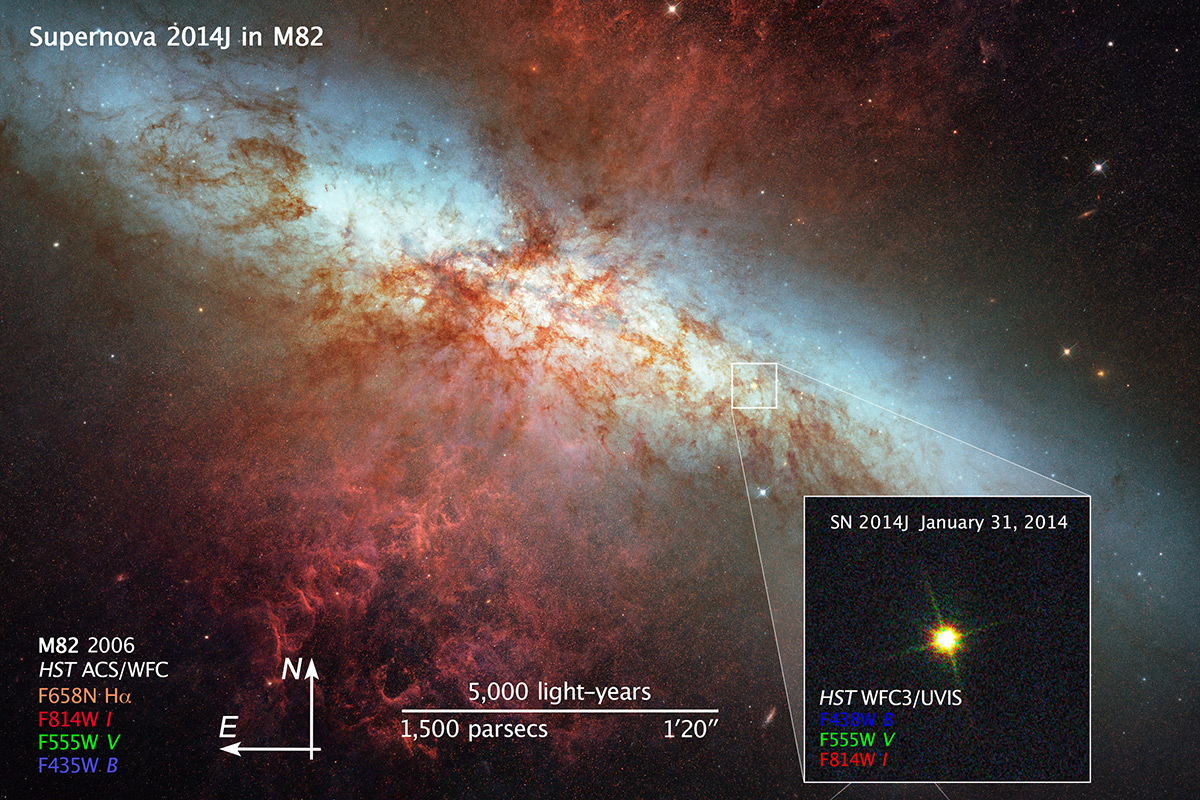
Share
Details
Claire Andreoli
NASA’s Goddard Space Flight Center
Greenbelt, Maryland
claire.andreoli@nasa.gov


